Abstract
Allocation of responses between two keys was studied during two alternating multiple-schedule components. Responses were recorded in successive quarters of each component. Variable-interval reinforcer schedules on the two keys were constant throughout the experiment for one (constant) component and were varied over conditions on one key for the other, producing changes in reinforcer ratios for the varied component. Behavior allocation for the first quarter of the constant component was inversely related to varied-component reinforcer ratios, a form of local contrast, but this relationship was not observed later in the component. During the first quarter of the varied component, slopes of matching lines were high and decreased later in the component. It is argued that this form of local contrast cannot be explained in terms of reallocation of extraneous reinforcers between components, and that the matching law for concurrent operants does not capture some sources of control over behavior allocation. A simple extension of the matching law is offered that adequately describes behavior changes during both components. A version of this formulation can predict contrast effects in absolute response rates.
Keywords: local contrast, multiple schedules, concurrent schedules, reallocation theory, matching law, key peck, pigeons
Full text
PDF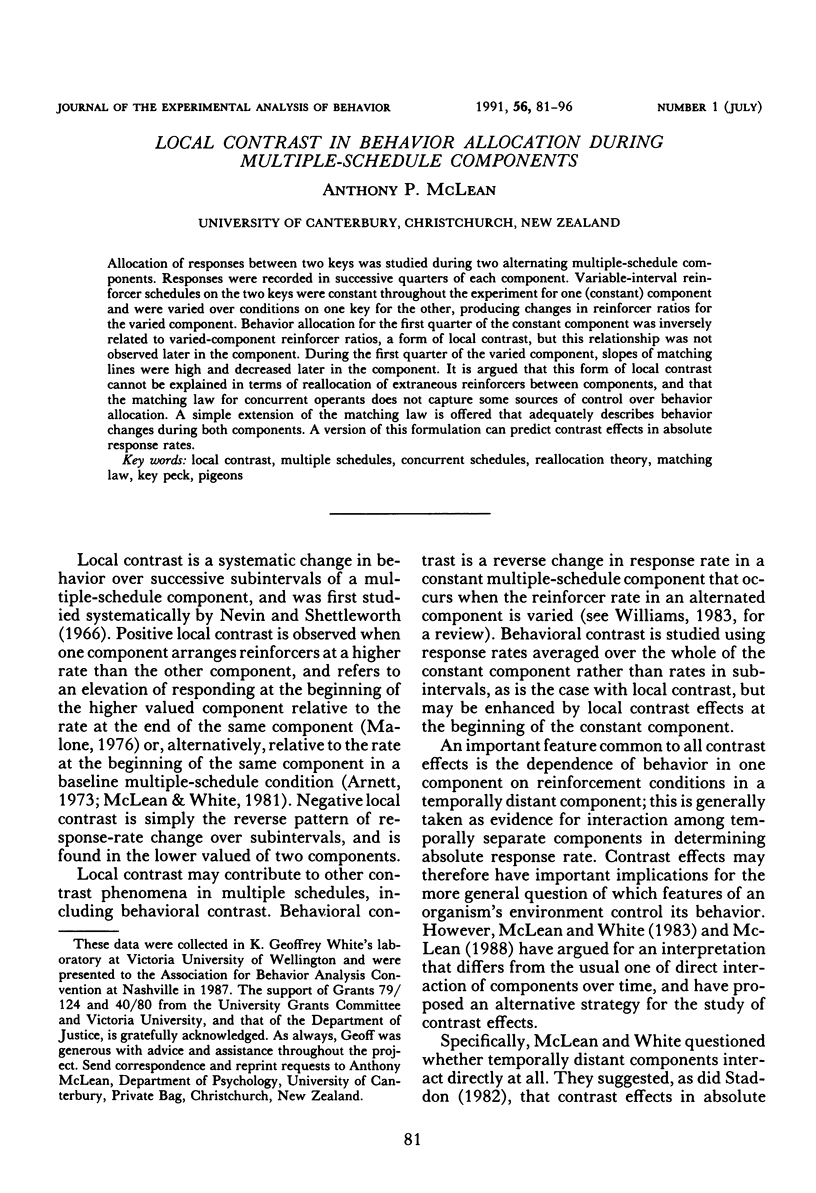
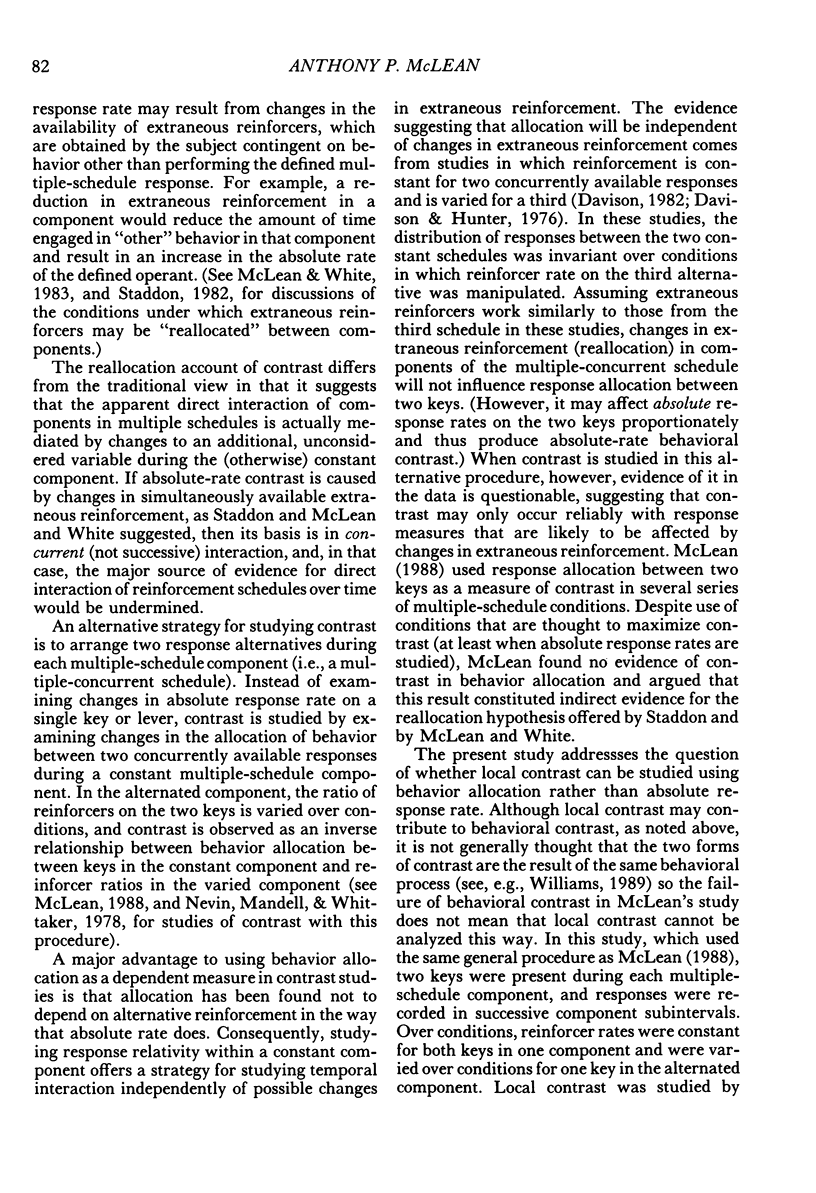
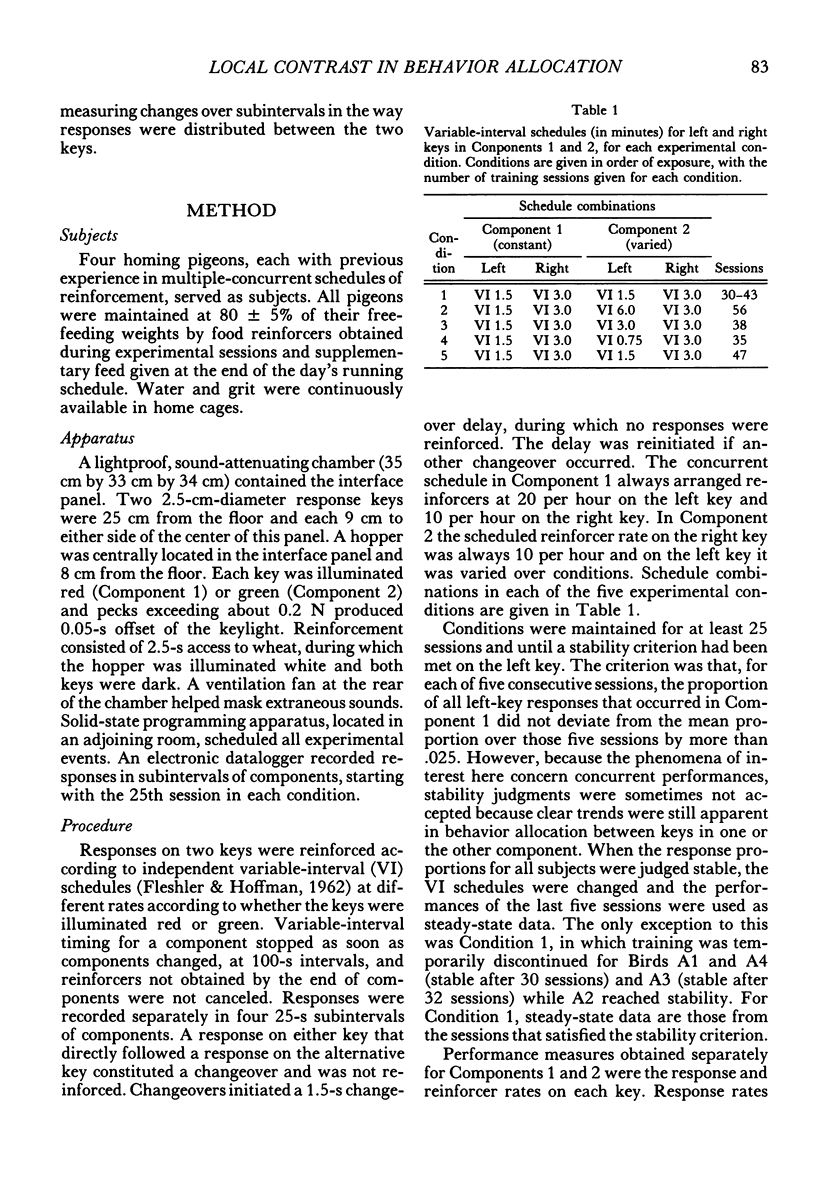
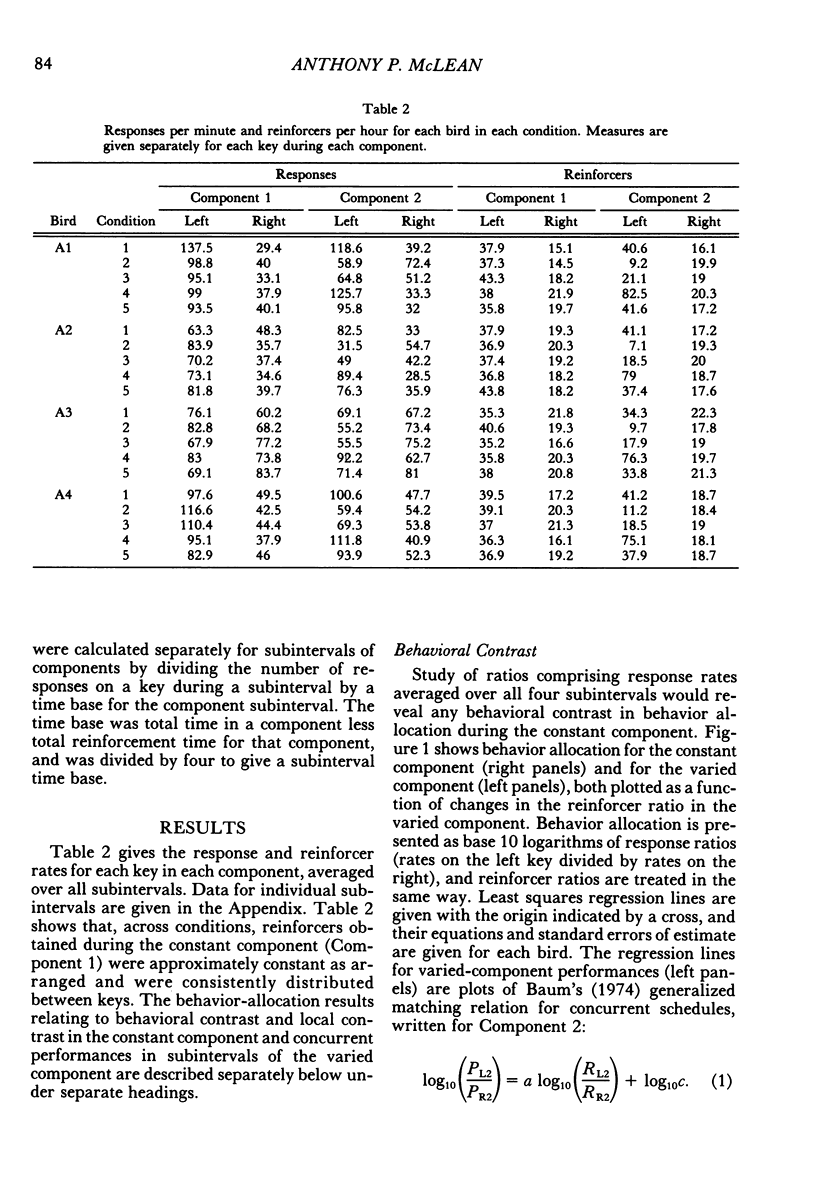

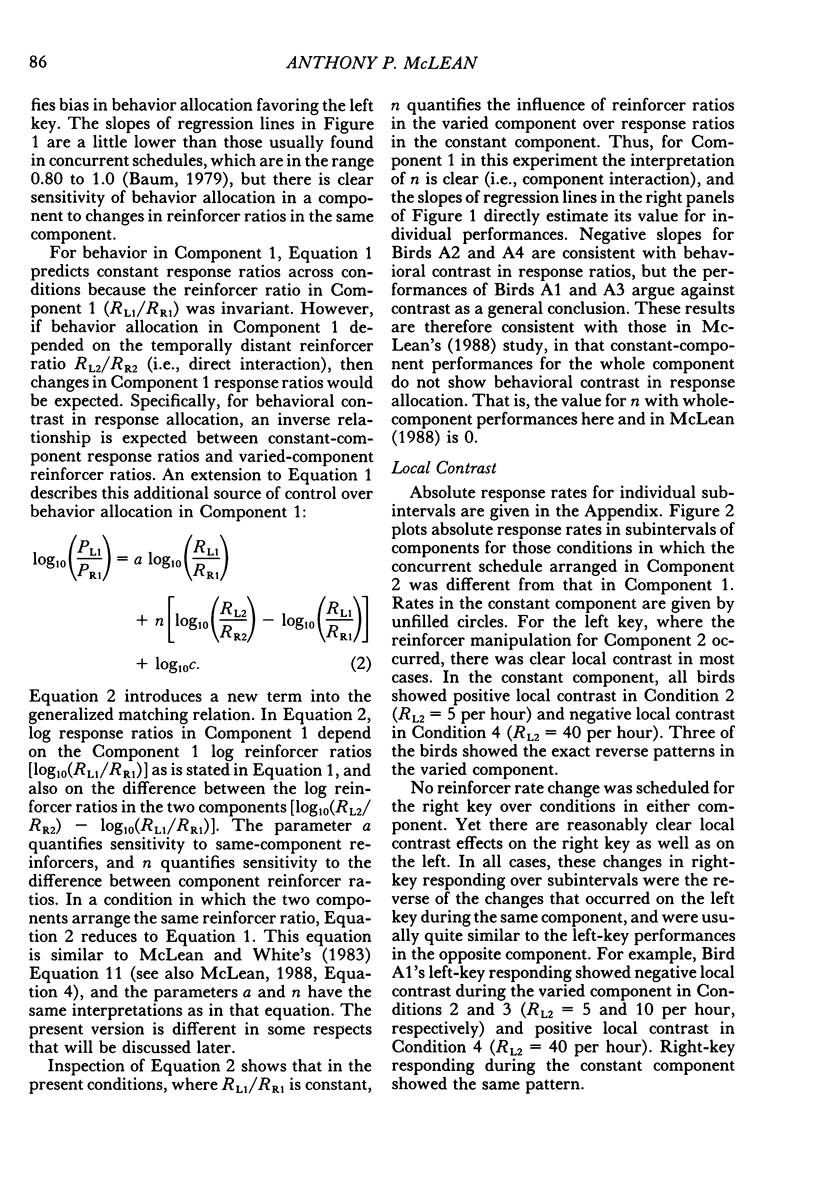
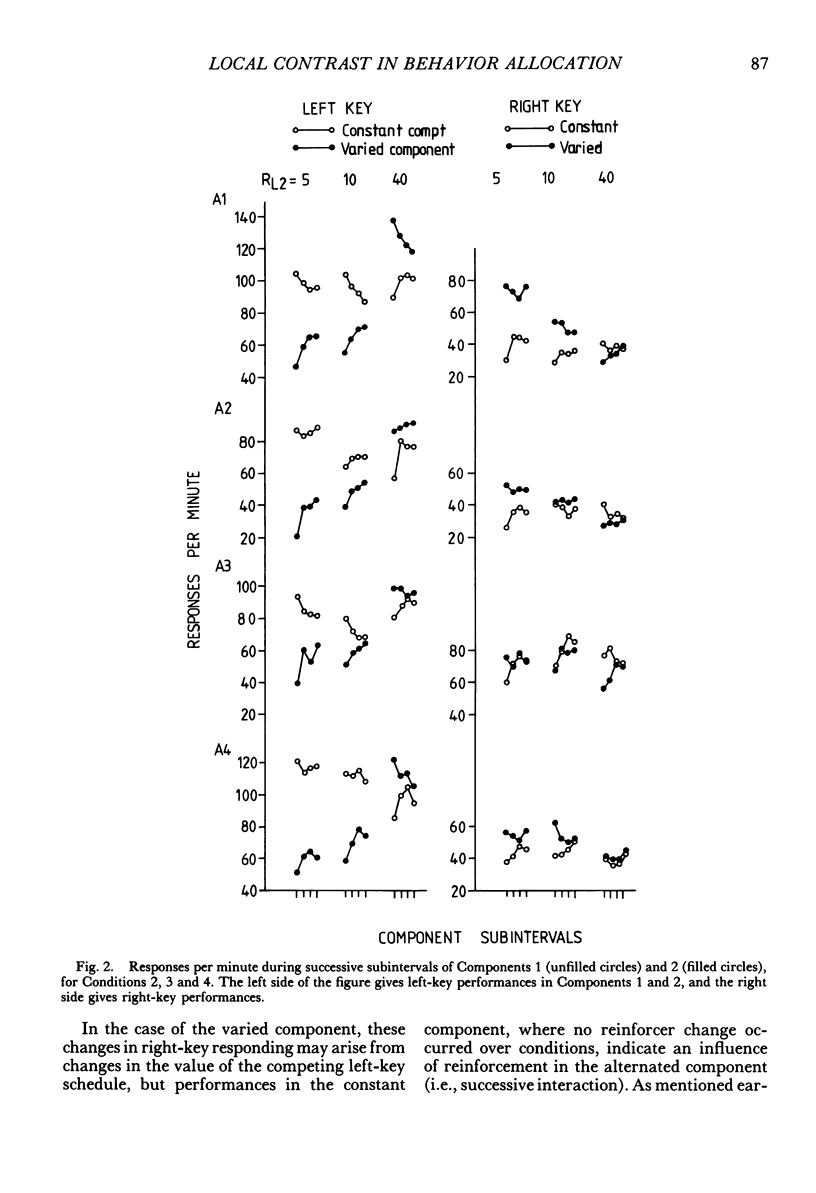
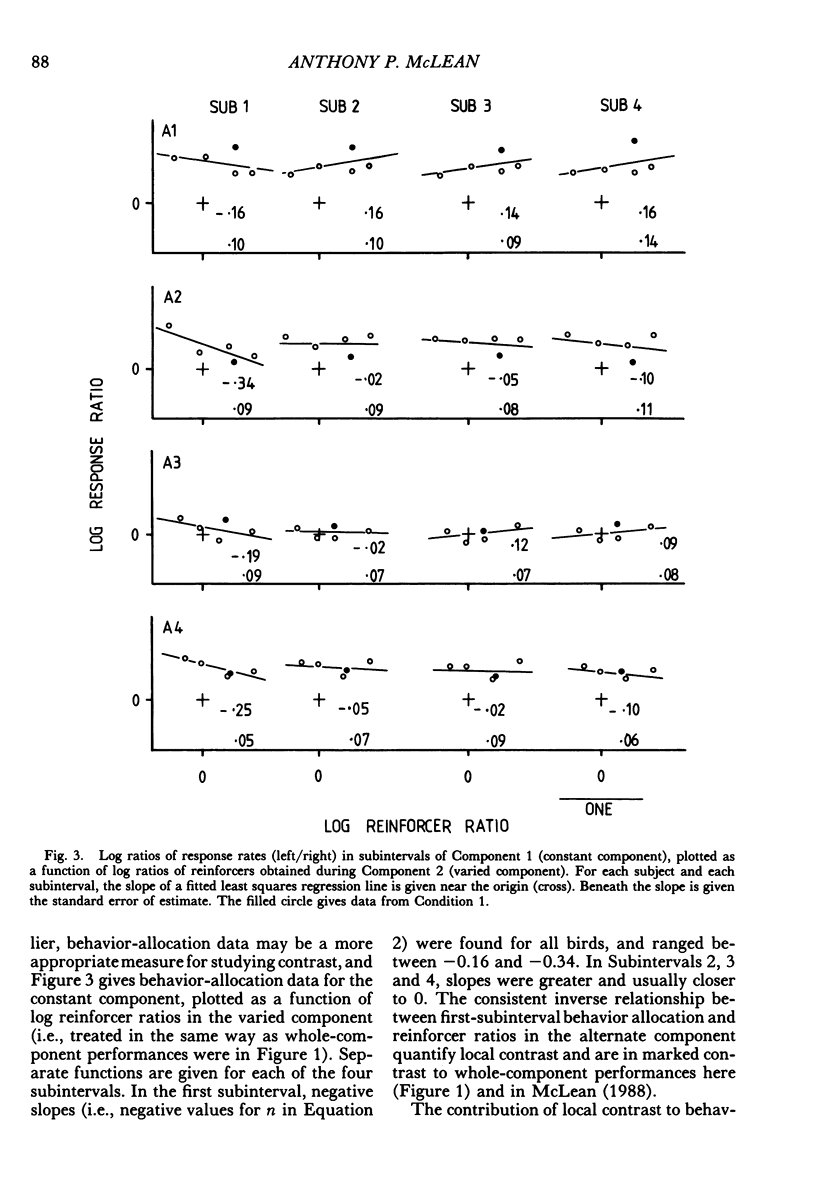
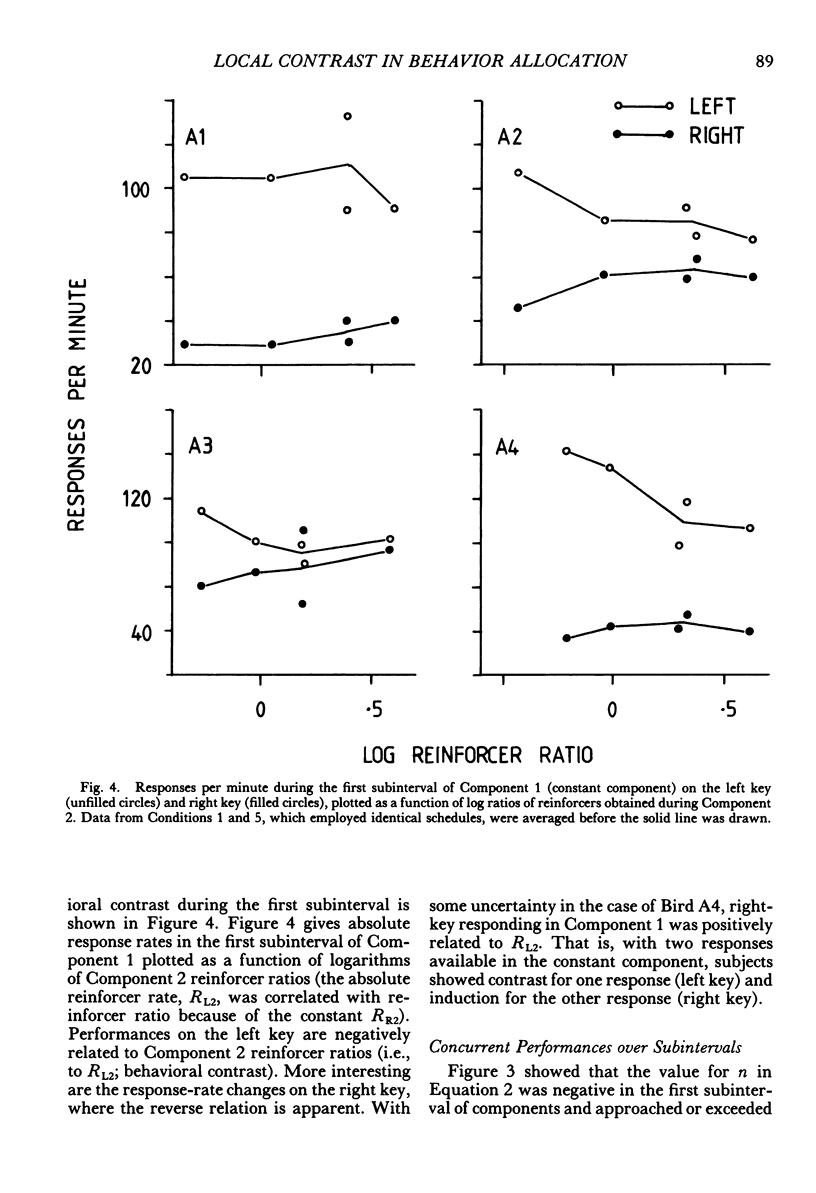
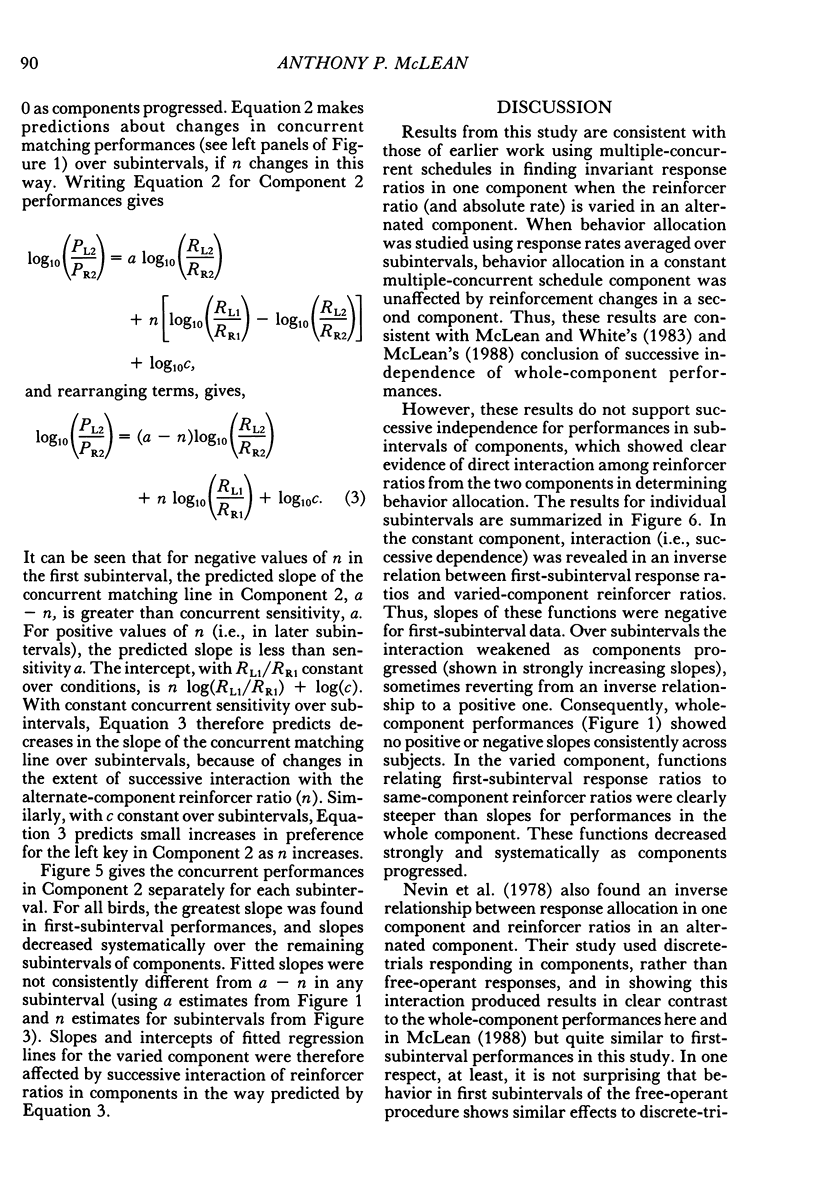
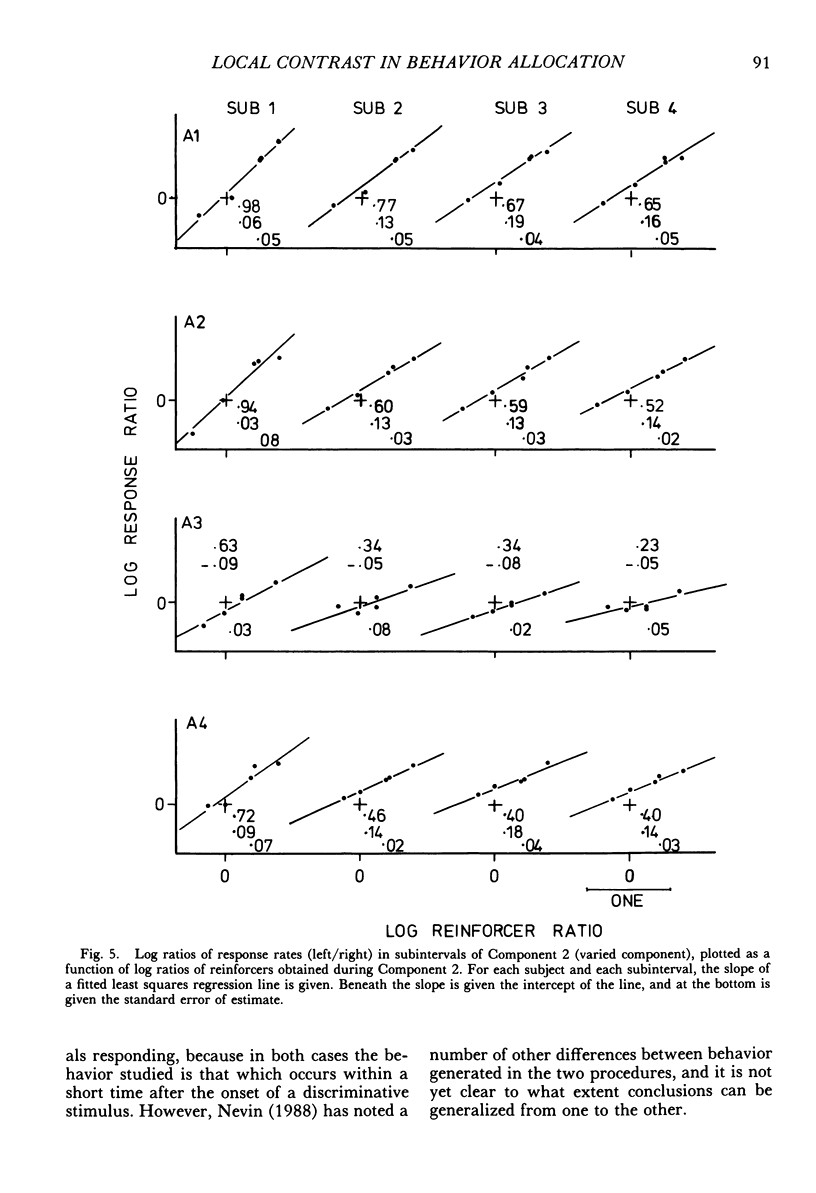
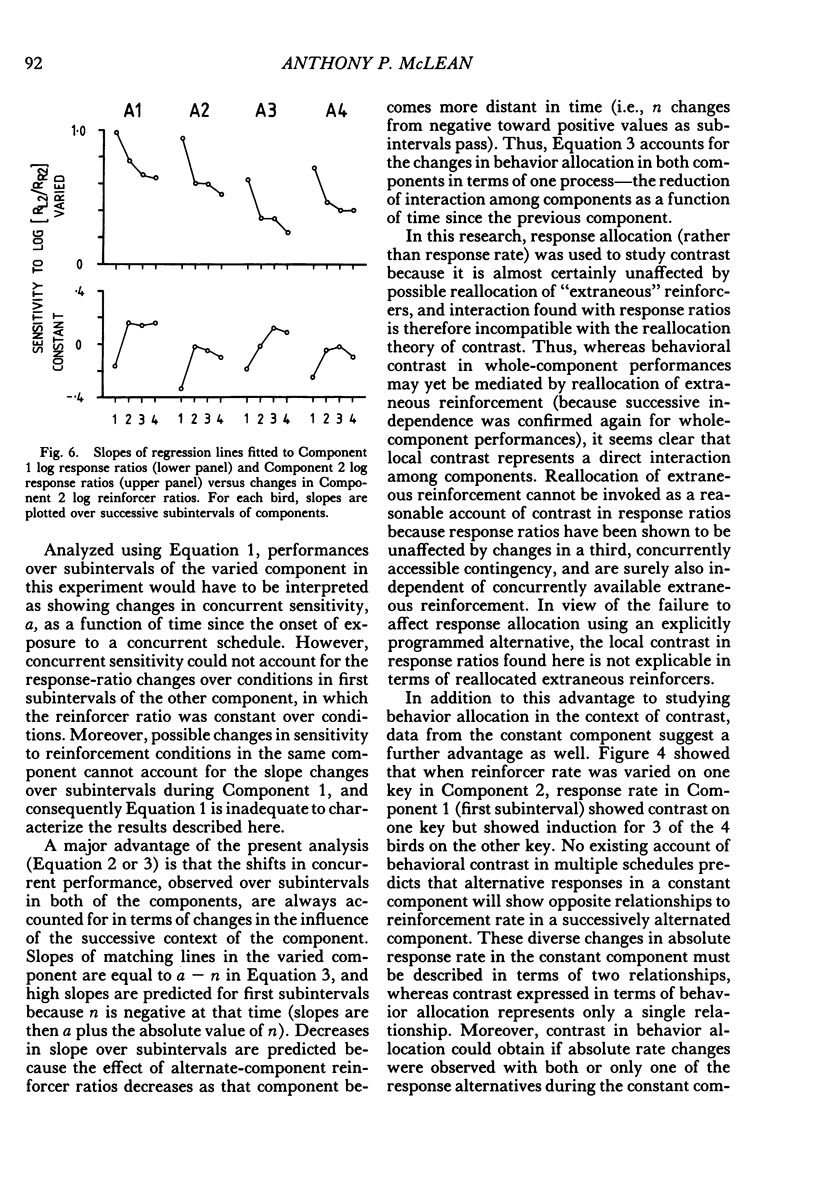
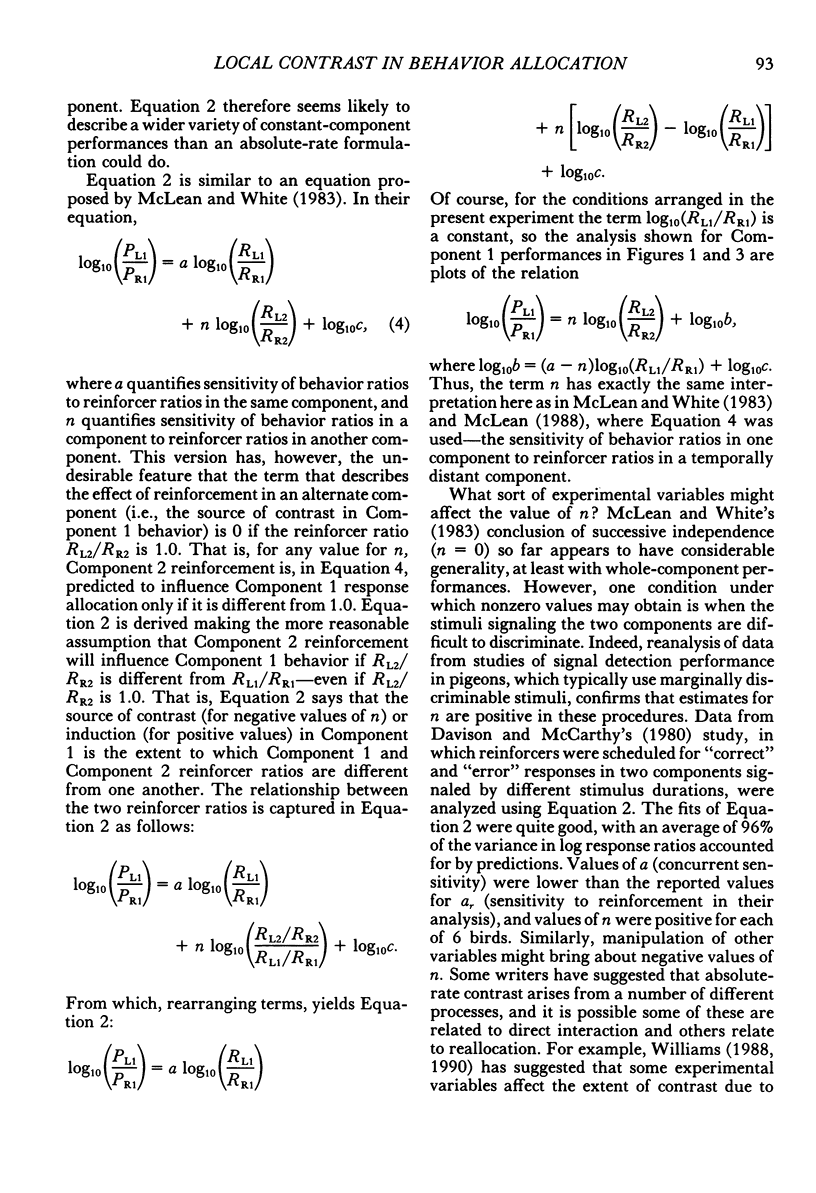
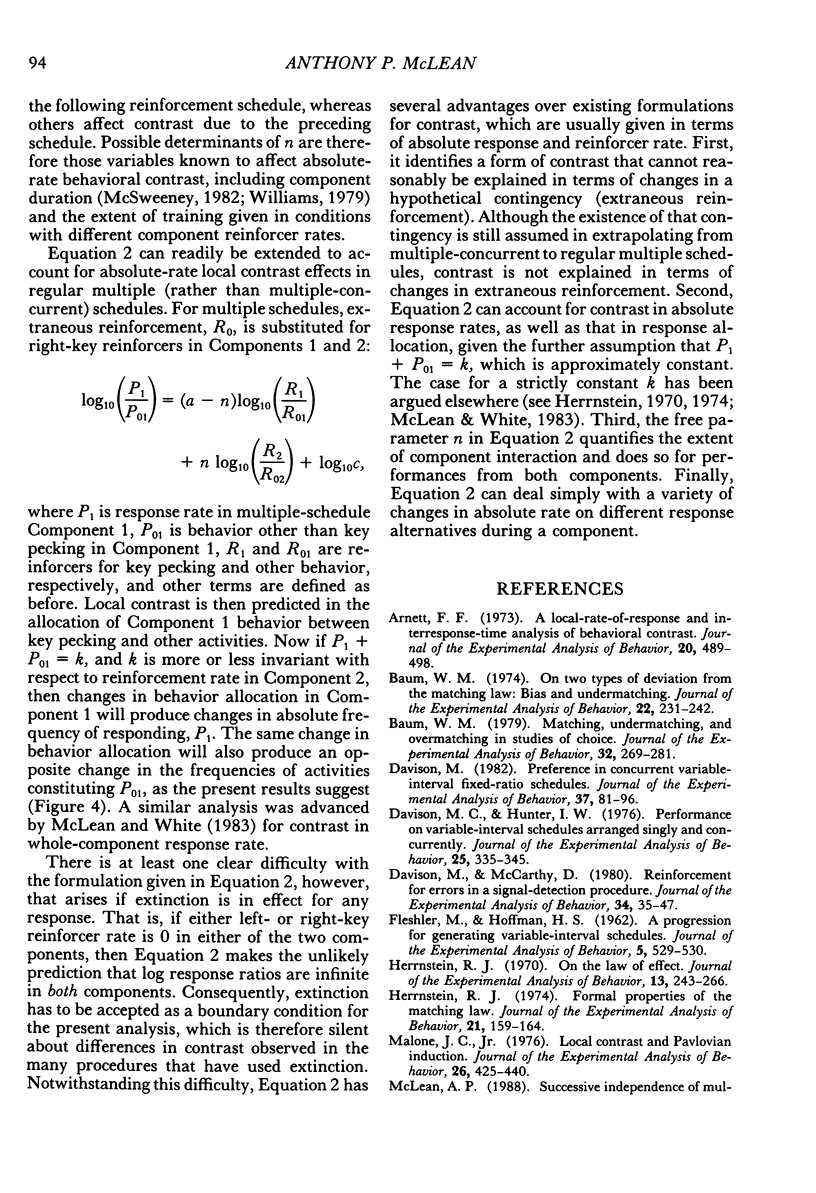
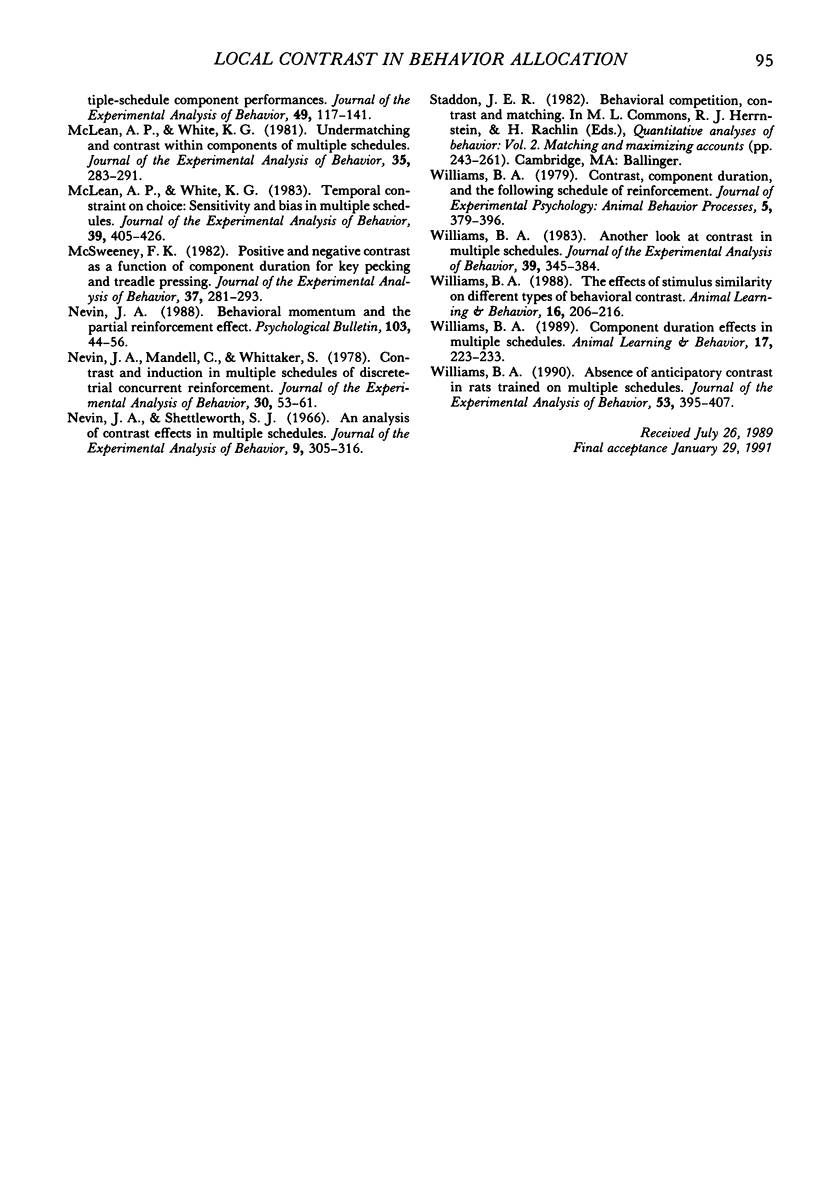
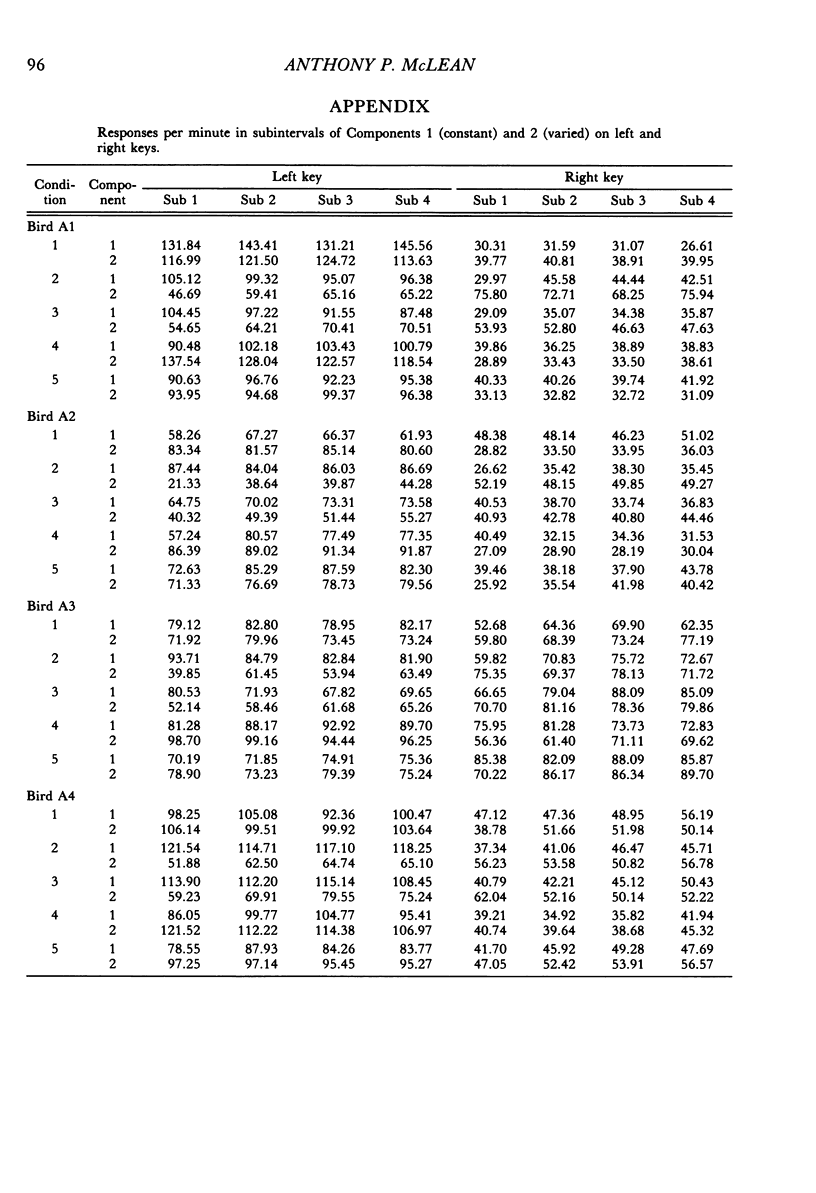
Selected References
These references are in PubMed. This may not be the complete list of references from this article.
- Arnett F. B. A local-rate-of-response and interresponse-time analysis of behavioral contrast. J Exp Anal Behav. 1973 Nov;20(3):489–498. doi: 10.1901/jeab.1973.20-489. [DOI] [PMC free article] [PubMed] [Google Scholar]
- Baum W. M. Matching, undermatching, and overmatching in studies of choice. J Exp Anal Behav. 1979 Sep;32(2):269–281. doi: 10.1901/jeab.1979.32-269. [DOI] [PMC free article] [PubMed] [Google Scholar]
- Baum W. M. On two types of deviation from the matching law: bias and undermatching. J Exp Anal Behav. 1974 Jul;22(1):231–242. doi: 10.1901/jeab.1974.22-231. [DOI] [PMC free article] [PubMed] [Google Scholar]
- Davison M. C., Hunter I. W. Performance on variable-interval schedules arranged singly and concurrently. J Exp Anal Behav. 1976 May;25(3):335–345. doi: 10.1901/jeab.1976.25-335. [DOI] [PMC free article] [PubMed] [Google Scholar]
- Davison M., McCarthy D. Reinforcement for errors in a signal-detection procedure. J Exp Anal Behav. 1980 Jul;34(1):35–47. doi: 10.1901/jeab.1980.34-35. [DOI] [PMC free article] [PubMed] [Google Scholar]
- Davison M. Preference in concurrent variable-interval fixed-ratio schedules. J Exp Anal Behav. 1982 Jan;37(1):81–96. doi: 10.1901/jeab.1982.37-81. [DOI] [PMC free article] [PubMed] [Google Scholar]
- FLESHLER M., HOFFMAN H. S. A progression for generating variable-interval schedules. J Exp Anal Behav. 1962 Oct;5:529–530. doi: 10.1901/jeab.1962.5-529. [DOI] [PMC free article] [PubMed] [Google Scholar]
- Herrnstein R. J. Formal properties of the matching law. J Exp Anal Behav. 1974 Jan;21(1):159–164. doi: 10.1901/jeab.1974.21-159. [DOI] [PMC free article] [PubMed] [Google Scholar]
- Herrnstein R. J. On the law of effect. J Exp Anal Behav. 1970 Mar;13(2):243–266. doi: 10.1901/jeab.1970.13-243. [DOI] [PMC free article] [PubMed] [Google Scholar]
- Malone J. C. Local contrast and Pavlovian induction. J Exp Anal Behav. 1976 Nov;26(3):425–440. doi: 10.1901/jeab.1976.26-425. [DOI] [PMC free article] [PubMed] [Google Scholar]
- McLean A. P. Successive independence of multiple-schedule component performances. J Exp Anal Behav. 1988 Jan;49(1):117–141. doi: 10.1901/jeab.1988.49-117. [DOI] [PMC free article] [PubMed] [Google Scholar]
- McLean A. P., White K. G. Temporal constraint on choice: Sensitivity and bias in multiple schedules. J Exp Anal Behav. 1983 May;39(3):405–426. doi: 10.1901/jeab.1983.39-405. [DOI] [PMC free article] [PubMed] [Google Scholar]
- McLean A. P., White K. G. Undermatching and contrast within components of multiple schedules. J Exp Anal Behav. 1981 May;35(3):283–291. doi: 10.1901/jeab.1981.35-283. [DOI] [PMC free article] [PubMed] [Google Scholar]
- McSweeney F. K. Positive and negative contrast as a function of component duration for key pecking and treadle pressing. J Exp Anal Behav. 1982 Mar;37(2):281–293. doi: 10.1901/jeab.1982.37-281. [DOI] [PMC free article] [PubMed] [Google Scholar]
- Nevin J. A., Mandell C., Whittaker S. Contrast and induction in multiple schedules of discrete-trial concurrent reinforcement. J Exp Anal Behav. 1978 Jul;30(1):53–61. doi: 10.1901/jeab.1978.30-53. [DOI] [PMC free article] [PubMed] [Google Scholar]
- Nevin J. A., Shettleworth S. J. An analysis of contrast effects in multiple schedules. J Exp Anal Behav. 1966 Jul;9(4):305–315. doi: 10.1901/jeab.1966.9-305. [DOI] [PMC free article] [PubMed] [Google Scholar]
- Williams B. A. Absence of anticipatory contrast in rats trained on multiple schedules. J Exp Anal Behav. 1990 May;53(3):395–407. doi: 10.1901/jeab.1990.53-395. [DOI] [PMC free article] [PubMed] [Google Scholar]
- Williams B. A. Another look at contrast in multiple schedules. J Exp Anal Behav. 1983 Mar;39(2):345–384. doi: 10.1901/jeab.1983.39-345. [DOI] [PMC free article] [PubMed] [Google Scholar]
- Williams B. A. Contrast, component duration, and the following schedule of reinforcement. J Exp Psychol Anim Behav Process. 1979 Oct;5(4):379–396. doi: 10.1037//0097-7403.5.4.379. [DOI] [PubMed] [Google Scholar]


